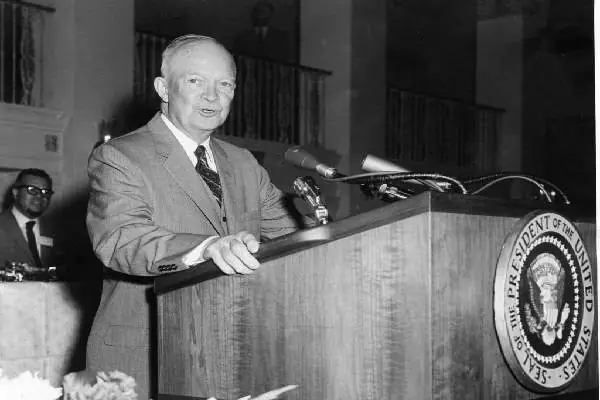Unraveling The Curious Tale Of The Mid-Century Onion Debacle: A Pungent Mishap

Mid-Century Onion Debacle. Image Source: Peakpx
The infamous mid-century Onion Debacle is the aftermath of two men, Vincent Kosuga and Sam Siegel, manipulating the market to make a fortune off onion futures in Chicago. Consequently, the government put onions off limits for future commodity trading.
History is filled with chronicles and fascinating incidents that capture our attention and ignite our curiosity. Similarly, the onion fiasco which unfolded during the mid-20th century is a pungent mishap that has left a lasting impression on the world.
Stocks and commodities are the available assets that can be traded to make a profit. However, the U.S. explicitly banned onions from trading, one of the only commodities, after a scheme nearly crashed the market and ruined the farmers’ lives. Let’s know what happened to the U.S. market and how this intensity occurred.
Background: How Did The ‘Onion Mishap’ Occur?
The year was 1955 when the great financial debacle occurred. Two men named Vincent Kosuga and Sam Seigel made a plan to get rich by making onions a commodity for the future.
In general, investors can purchase a commodity to be received at a point in the future for a current market price. Investors thinking of guaranteeing profit participate as they hope for their commodities’ price increment.

Mid-century onion debacle. Image Source: Wikimedia creative commons
In the mid-1940s, onion futures trading began on the Chicago Mercantile Exchange (CME). A century later, onion futures contracts were the most traded product on the CME. Farmers and consumers were hit hardest by the onion crisis and, more broadly, by high inflation.
Incident: Cornering of The Market
In 1955, Seigel and Kosuga cornered the market as they bought onions on a large scale. Likewise, they controlled 98% of the available onions in Chicago. Thousands of tons of onions were dispatched to Chicago to cover their purchase.
As a result, the duo had stored tons of onions and soon began manipulating the onion growers and investors to purchase their inventory.
No wonder onion growers began purchasing the vegetables, which made Siegel and Kosuga a candidate for ‘short positions’. The term ‘short position’ in finance means investing in a way that the investor profits if the value of the asset falls.
ALSO READ: The Hedy Lamarr Invention: The Hollywood Starlet Turned Inventor
The Unsought Consequence
The duo shipped the onions outside of Chicago to have them cleaned, repackaged, and re-shipped back to Chicago. Looking at the new shipments caused many traders to think that there was an excess of onions, further driving down the prices in Chicago.
Coming to March 1956, Kosuga and Siegel had poured the markets with their onions driving down the prices. Onions once worth 50 pounds were decreased to 10 cents a bag.
The duo had shipped so many onions that other parts of the U.S faced shortages.
The Aftermath of the Great Onion Debacle
Due to their ‘short positions’ on the Onion future, Siegel and Kosuga became instant millionaires. There was a time where the price of onions was so low that the bag they came in cost more. This devastating suppression of the price led many onion farmers into bankruptcy.
Soon, a public outburst established among onion farmers who had large amounts of worthless inventory. Many farmers had to pay to dispose of the large amounts of onions they had purchased and grown.
Unsurprisingly, the market crashed, and many commentators stated Kosuga’s actions as illegal gambling. The Commodity Exchange Authority became aware of the sudden and unexpected price changes.
They launched an investigation without delay, and the U.S. Senate and House Committee on Agriculture held hearings on the subject.
You might want to read the inspiring story of Henrietta Wood.
The Mid-Century Onion Debacle Gave Us The Onion Futures Act Law
After the hearings, Gerald Ford, then-congressman, sponsored a bill called the Onion Futures Act. The bill banned futures trading in onions and was unpopular among traders.
The 34th U.S. president, Dwight D. Eisenhower, signed the bill in August 1958, therefore excluding onions from the commodity list in the Commodity Exchange Act.
The Onion Futures Act aimed to regulate and control trading in onion futures contracts to maintain stability and protect the interests of onion farmers and producers.

Former president Dwight Eisenhower. Image Source: picryl
During the early 1950s, the onion market experienced significant price volatility, leading to fluctuations that were deemed unpredictable and detrimental to onion farmers. Some attributed these price swings to excessive speculation and manipulative trading practices in onion futures contracts.
However, critics argued that excessive speculation in onion-futures-contracts was distorting onion prices and causing instability in the market. They contended that speculative trading, driven by profit motives rather than genuine hedging needs, drove onion prices to artificially high or low levels.
This volatility significantly impacted onion farmers and producers who relied on stable and predictable market conditions.
The great mid-century onion debacle remains a fascinating and humorous chapter in culinary lore. It serves as a reminder that, in pursuing culinary innovation, even the most esteemed chefs can stumble upon unforeseen consequences.
Ultimately, this aromatic mishap adds a touch of whimsy to the world, reminding us to embrace the unexpected and cherish the tales from such pungent adventures.
Cfp, H. B. C. (2021, May 20). The Onion King and Market Manipulation. Sherwoodfp Main Site.
Martin, A. (2022, October 16). Why Onions Are One Of The Only Trading Commodities Banned In The United States. Medium.
Ordoñez, E. M. (2023, January 13). High onion prices a symptom of misgovernance | Inquirer Business. INQUIRER.net.
Chicago Mercantile Exchange v. Tieken, 178 F. Supp. 779 (N.D. Ill. 1959). (n.d.). Justia Law.
Did you notice an error ?
Please help us make corrections by submitting a suggestion. Your help is greatly appreciated!











